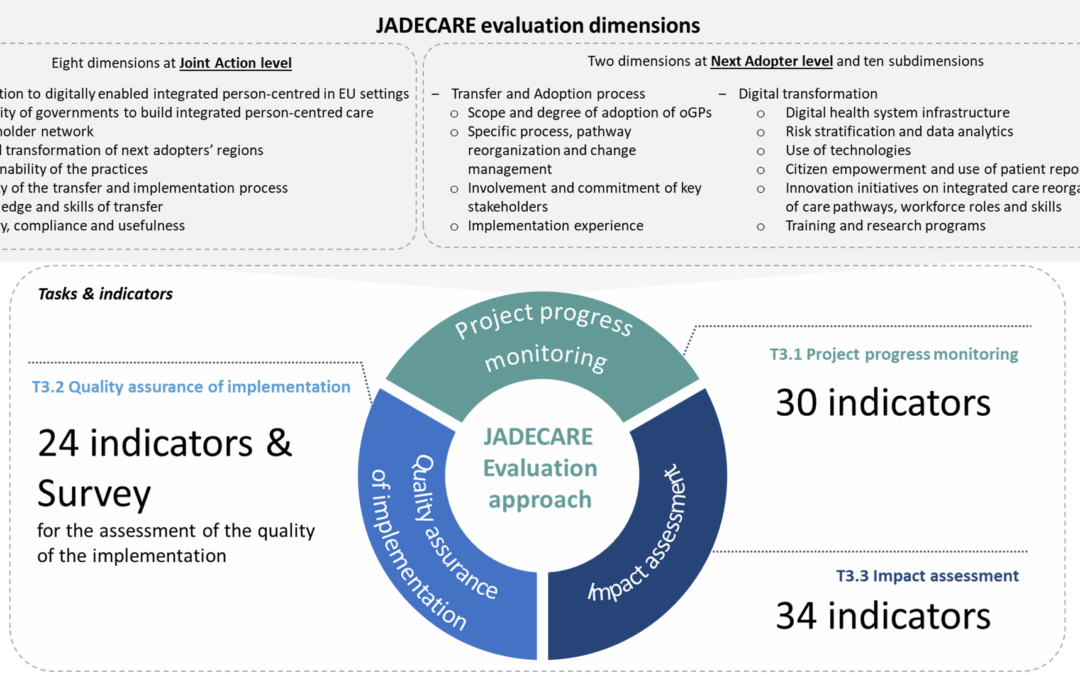The JADECARE Evaluation Framework provides a comprehensive and structured framework of the areas studied in the Joint Action that aims at:
- Assessing the quality and compliance of the project process and stakeholders’ views inclusion and satisfaction.
- Performing a systematic appraisal of the quality of the transfer and implementation process, understanding, evaluating and reporting the experience of adopting original Good Practices (oGPs) in in heterogeneous Next Adopters (NA) sites.
- Providing a methodological framework for assessing the different features of the oGPs adopted to cover the requirements and expectations.
- Evaluating the reinforcement of the capacity of health authorities to organise and deliver digitally enabled, integrated, person-centred care
- Evaluating the transfer the good practices (or their significant elements) from the oGPs to the NAs in terms of performance, acceptance, satisfaction and sustainability.
The operationalizing of the evaluation framework resulted in a total of 88 indicators indicators (process, output or outcome indicators), where thirty indicators are related to Project progress monitoring, 24 indicators to Quality assurance of implementation and 34 to Impact assessment (see lead image / figure).
This evaluation approach: (1) aligns the measurement of the JADECARE objectives according to the indicators defined in the evaluation tasks, avoiding redundancies and overlapping; (2) associates indicators with specific assessment level (Joint Action or Next Adopter level) and (3) ensures all JADECARE dimensions are analysed in a robust and systematic way.
The project progress monitoring verifies the planned implementation of the project and the achievement of the objectives using a comprehensive approach with quantitative and qualitative methods. In addition, it provides key information to beneficiaries to correct the limitations detected and boost the strengths in the development of activities, helping to produce the most valuable outputs and outcomes.
The quality assurance of implementation is the second pillar of the JADECARE evaluation approach. It consists of the development and application of an implementation strategy, and the evaluation of the quality of the implementation presented in this document. The JADECARE implementation strategy includes a series of methods and techniques, concrete procedures and recommendations. It aims to enhance the quality of the adoption and sustainability of JADECARE oGPs in NAs, considering their particular needs, interest, possibilities and expectations. It has to be appropriate from the scientific point of view, applicable considering data availability and feasible according to the project´s timeline and resources.
The aim of the impact assessment is to clarify the proposed set of outputs outlined in the Grant Agreement and suggest a methodology to assess the impact of JADECARE at two levels: a) the Joint Action in overall (including impact on external stakeholders) and b) the next adopters.
NB: This article is providing a summary of JADECARE’s evaluation methods and thus demonstrates the breadth and richness of the evaluation results under preparation. More details will be highlighted by a focus article in the upcoming second newsletter for this year, i.e. 2023-2, and of course through the final reporting on the project outcomes.
